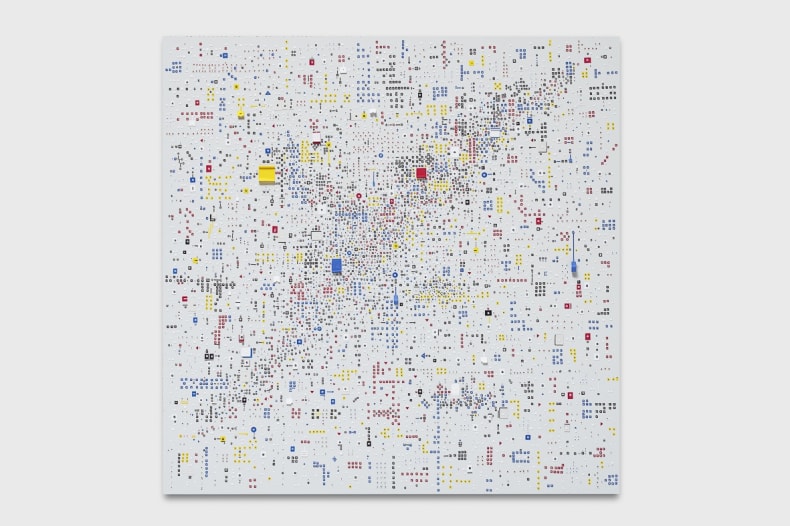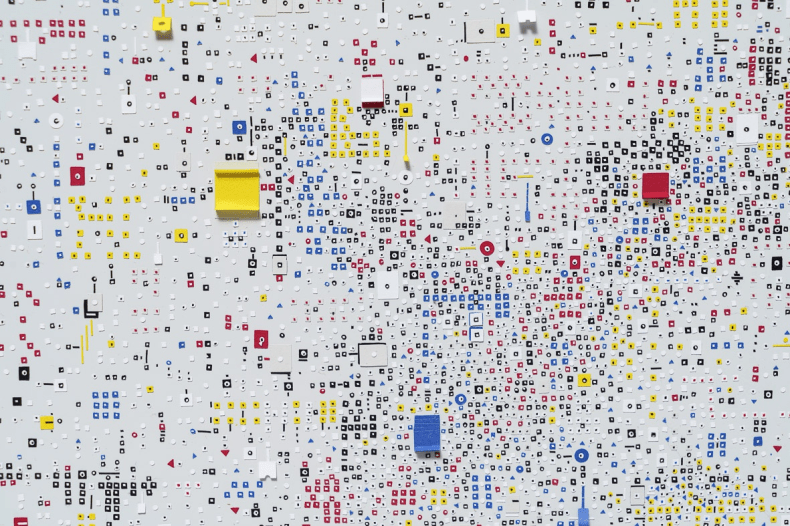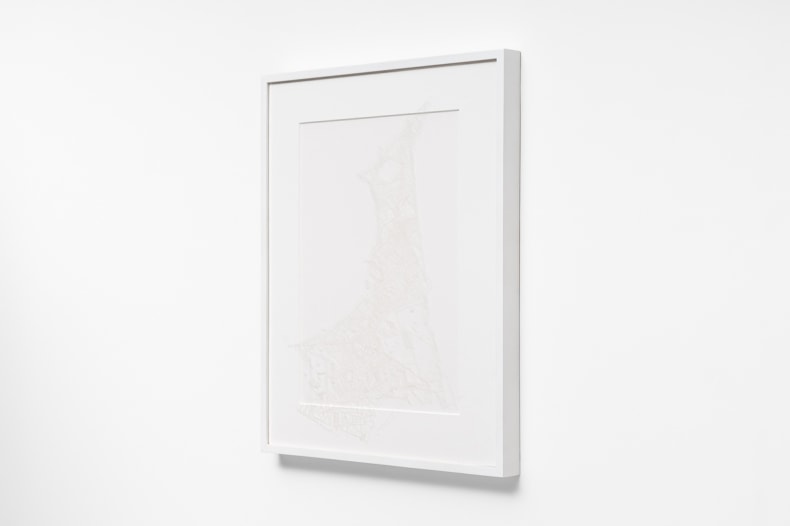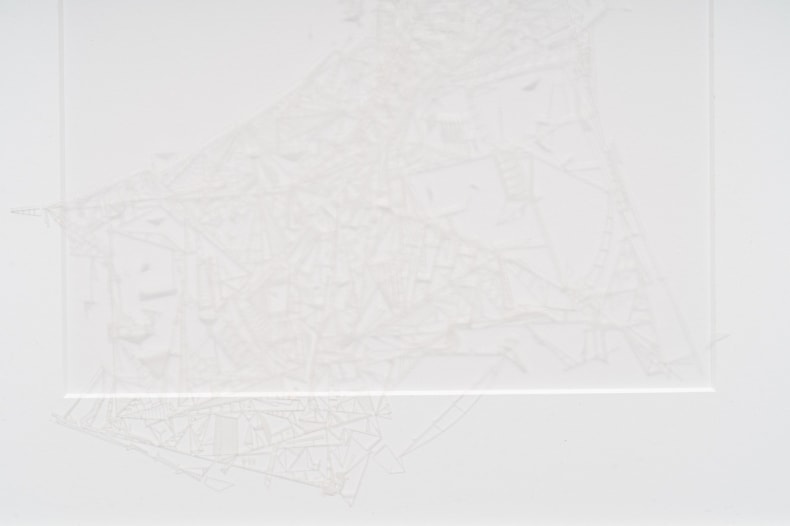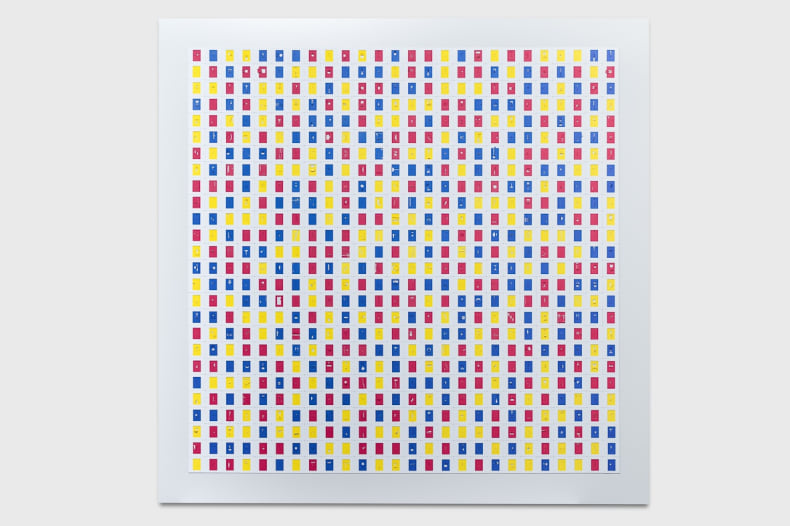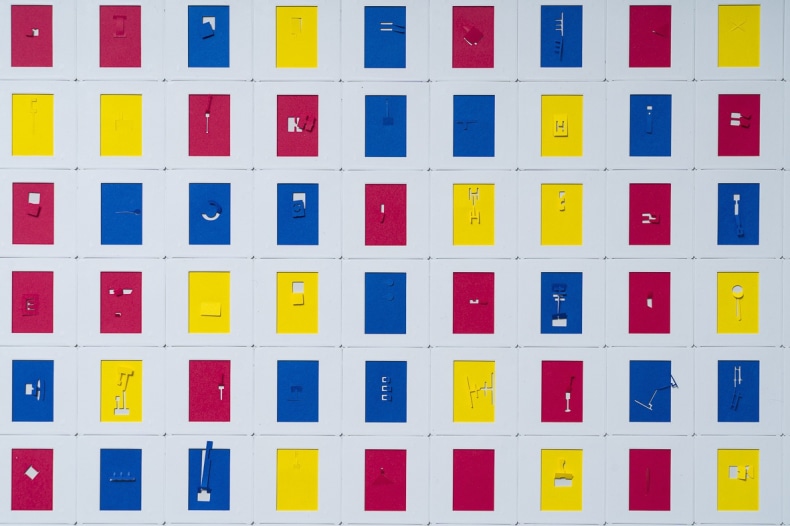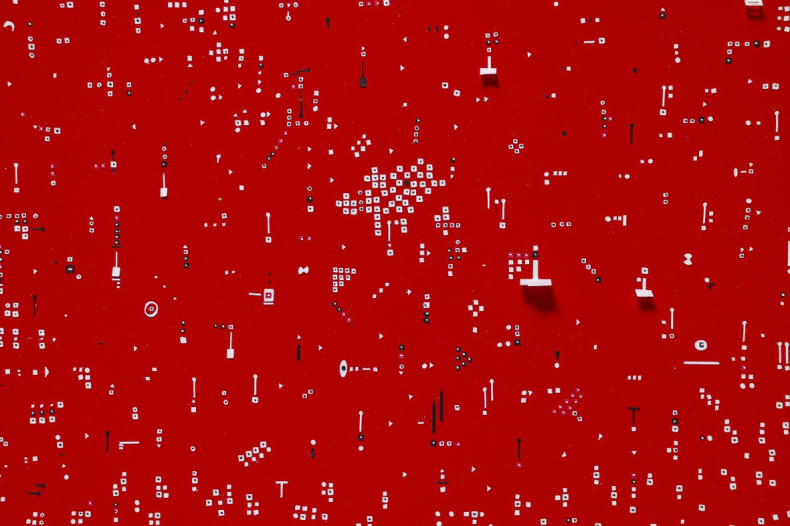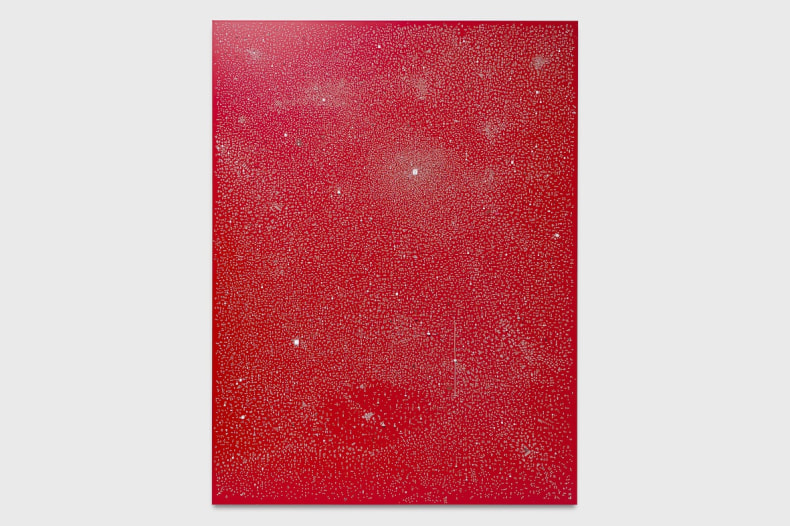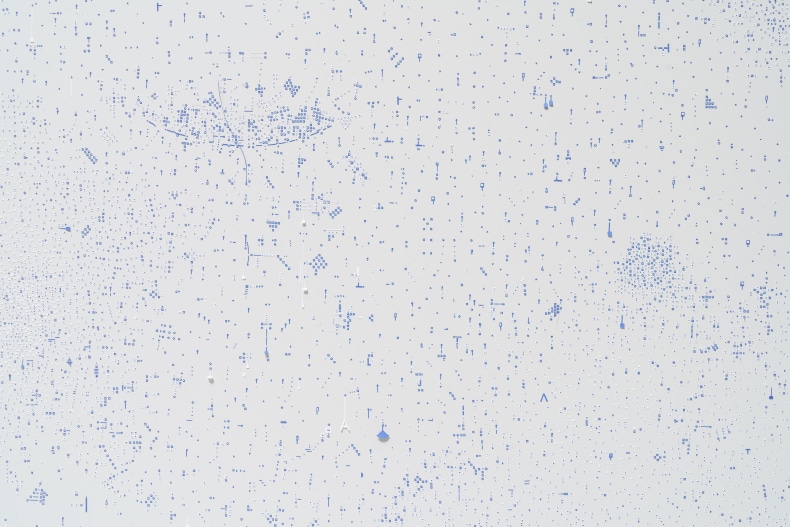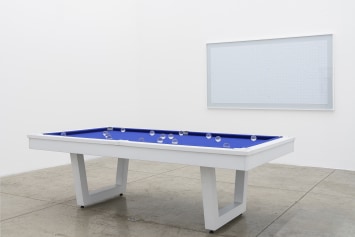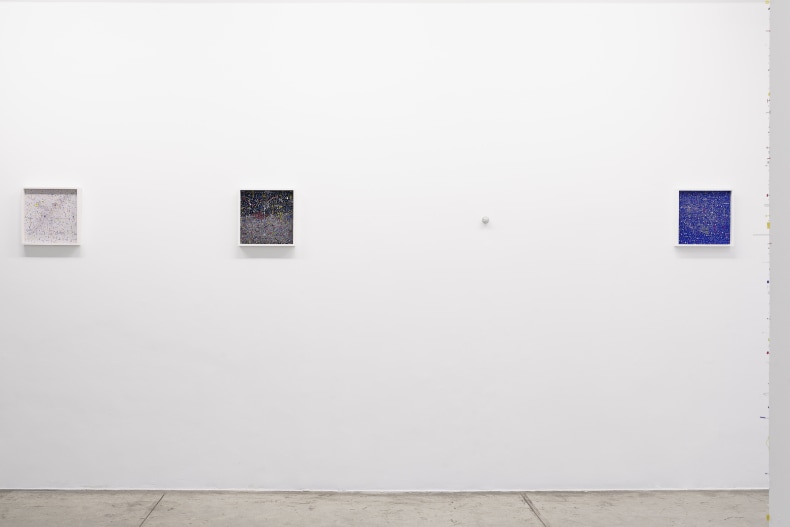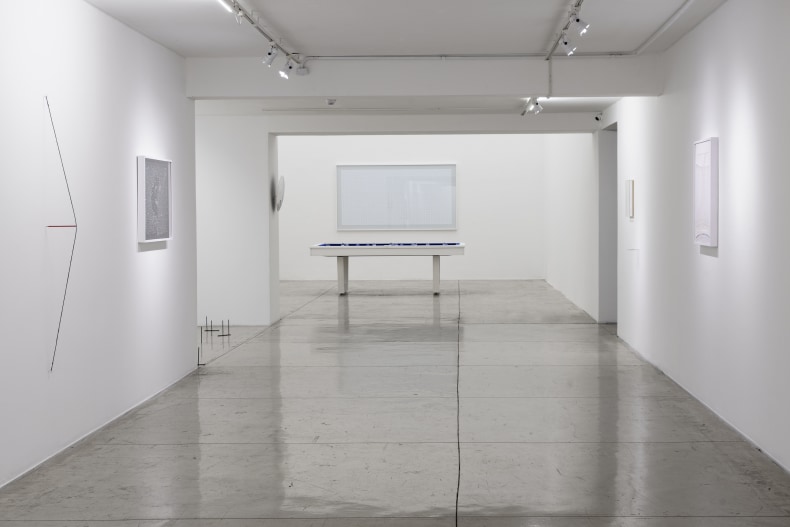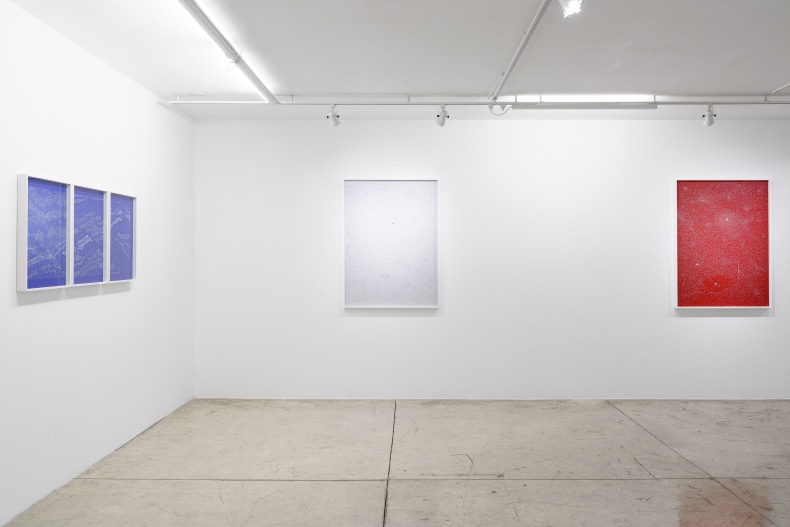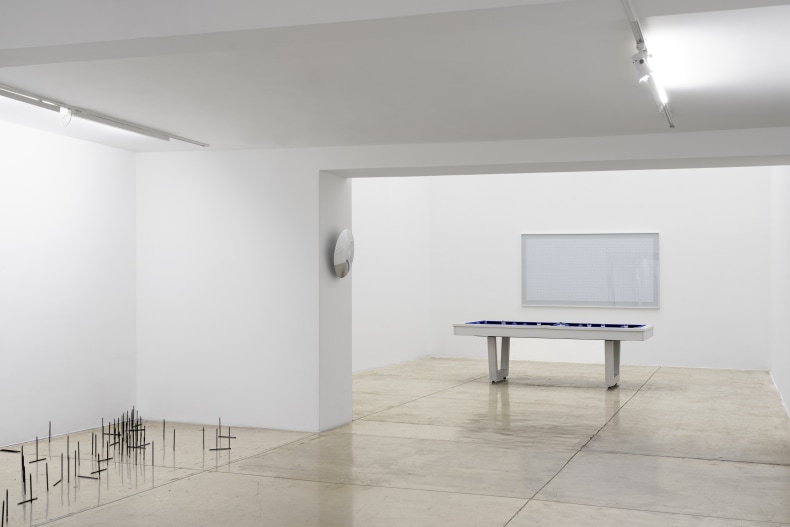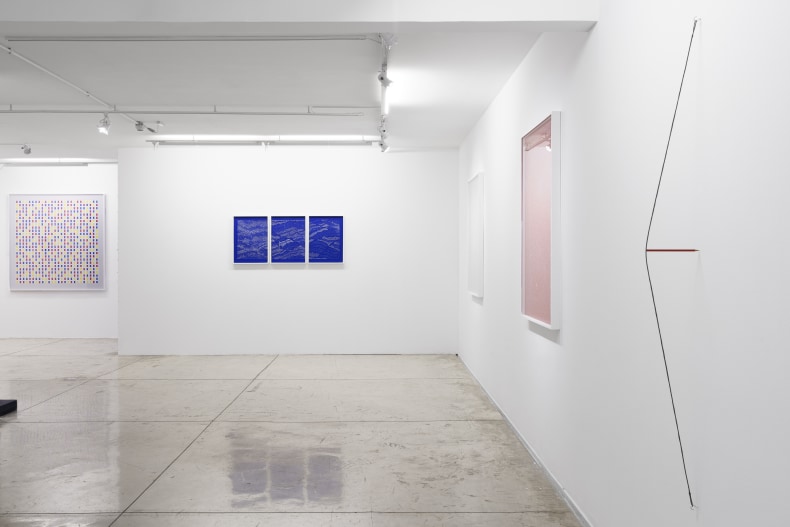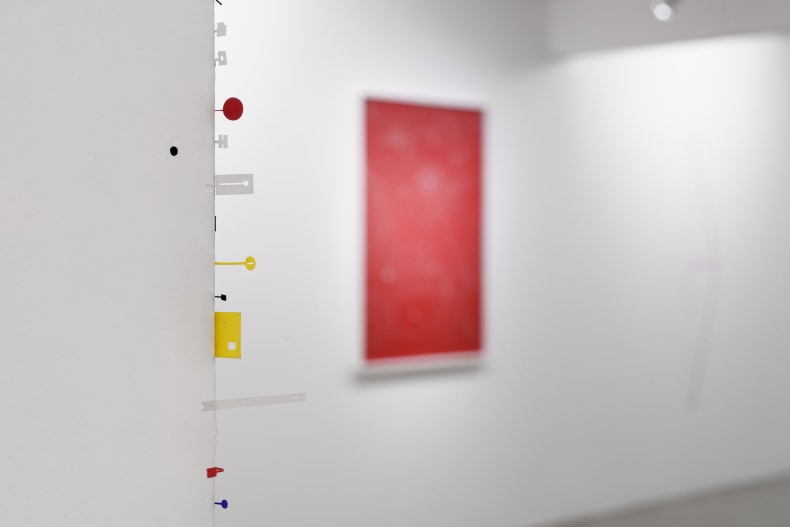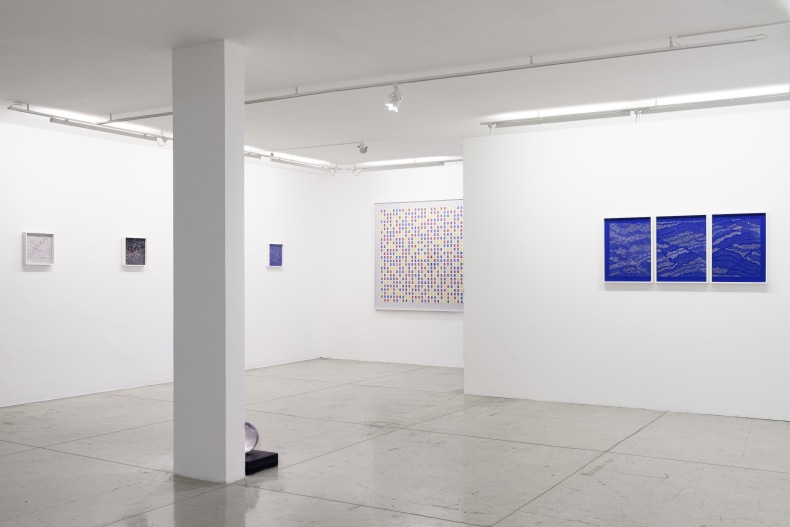Nara Roesler São Paulo is pleased to present Subatomic Society, a solo exhibition by Uruguayan artist Marco Maggi. The exhibition showcases 21 works, focusing primarily on recent creations produced over the past two years.
Since the beginning of his career in the 1990s, Marco Maggi has employed the mechanisms of contemporary perception—shaped by speed, immediacy, and voracity—as both a starting point and a subject of critique. Maggi’s work directly challenges the disengaged and hurried gaze with which we now perceive the world around us. His propositions take the opposite path, urging viewers to adopt an active presence–one that seems out of step with today’s logic, despite our era’s obsession with practices like mindfulness.
At first glance, Maggi’s works may appear silent, and in some cases, nearly imperceptible. The miniature scale in which they are created demands a keen and attentive eye. Only then does their complexity unfold: intricate, minuscule geometric patterns, dashed lines, and even structures with architectural tendencies emerge from their surfaces, revealing an unexpected and interwoven network.
For Maggi, his exhibition maintains a direct connection with the realm of natural sciences. He is particularly interested in the shift from Classical Physics to Quantum Physics in the early 20th century. This relationship is introduced through the title Subatomic Society. While Classical Mechanics deals with the forces acting on objects larger than the atom, Quantum Physics delves into the subatomic universe, where “instabilities, uncertainties, and imprecisions increase. These characteristics define the subatomic world par excellence and closely relate to how we see and communicate in contemporary society,” explains the artist.
In addition to paper-based works on Dibond—a practice Maggi has been developing for the past decade—the exhibition also features pieces with varied supports, including acrylic plates, pool tables, ping-pong balls, and acrylic spheres, onto which Maggi constructs his intricate networks and patterns.
Another crucial aspect of his work is the challenge of capturing it in photographic records. The minute details of his pieces rarely fit within a single image. Just as appreciating his poetics requires careful, meticulous observation, so too does documenting them: the camera must engage with the work in an intimate, close-up manner to capture its finest details, rendering a broader view nearly useless.
In a text written about Maggi’s work when the artist represented Uruguay at the 56th Venice Biennale, philosopher François Cusset comments on his method: “Lines carry meaning; they qualify what deserves to be inscribed: on the other hand, the insignificant leaves no trace, the banal has no memory, everything disappears with the instant of its relevance. Marco Maggi turns this established order upside down; by sculpting and cutting, he transforms the insignificant into a trace, the void into an archive, the shadow into an alphabet, the detail into a cosmos, and the tiniest variations into that famous revolution we had long given up waiting for.”
